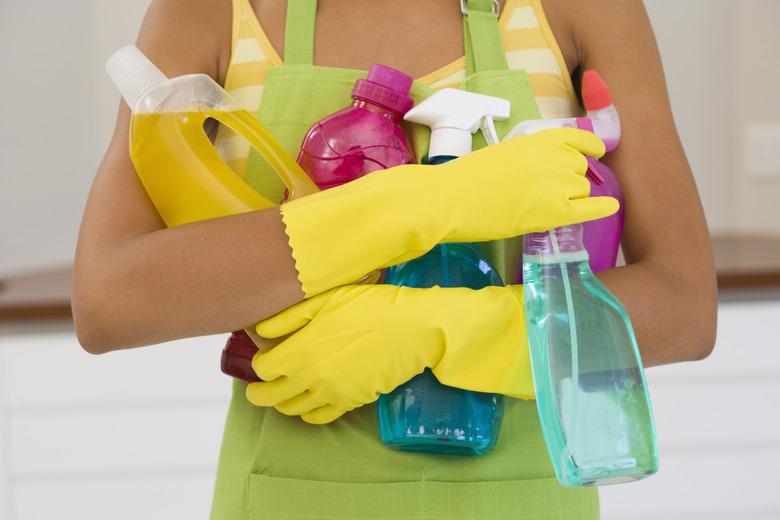Common Household Pollutants
Products that you use in your home can contain toxic ingredients that cause environmental pollution and compromise your health. According to the Environmental Protection Agency, household pollutants contained in furnishings, man-made building materials, personal care products, cleaning chemicals and pesticides can cause diseases and even death. By gaining information about the dangers lurking in certain household products, you can make informed choices when you go shopping for household products.
Auto Care Products
Auto Care Products
You can expose yourself to poisonous ingredients when you perform car maintenance with liquids such as brake fluid, motor oil, gasoline and antifreeze. If these liquids drip, they can cause soil contamination when they seep into the ground. They can also contaminate ground water. According to the National Oceanic and Atmospheric Administration, you must avoid dumping waste antifreeze on the ground or in sewers, waterways and septic systems; metals and other contaminants in antifreeze liquid kill marine life when the liquid seeps into underground water through the soil.
Household Cleaners
Household Cleaners
In a booklet on indoor pollutants, the EPA lists potentially harmful chemicals that you use for various cleaning exercises around the house. Some of these chemicals are ammonia, ethylene glycol butyl ether, Ethoxylated nonyl phenol and naphthalene. These chemicals can be found in products such as antiseptics and grime removers used in cleaning toilet bowls, bathrooms and ovens. You can also find these toxic ingredients in laundry detergents and solvents. The poisonous ingredients are effective in killing germs, but they are harmful to you as well.
Volatile Organic Compounds
Volatile Organic Compounds
High formaldehyde levels can cause cancer in humans, the EPA reports. You may expose yourself to formaldehyde and other volatile organic compounds when you apply scents, hair sprays, finishes, rug cleaners, paints, lacquers, paint strippers, pesticides and dry-cleaning fluids. VOCs contained in these products can cause various health symptoms, including discomfort in the nose and throat, nausea, nosebleed, allergic skin reaction, fatigue and dizziness.
Pesticides and Insecticides
Pesticides and Insecticides
If pests have infested your home, you may consider using pesticides. Pests such as bedbugs, mites, lice and cockroaches can be a nuisance. Using chemical pesticides, however, may expose you to pollution risks. You risk inhaling spray mists, vapors and contaminated dust when you use pesticides. To avoid such problems, employ pest management techniques following four steps. First, set up an action threshold that determines whether the pest's population is rampant and warrants control. Then identify and monitor pests to determine whether the pests in your house are harmful or innocuous. Apply preventive measures — such as sealing entry points — to stop pests before they become a threat. When all fails, the final step is using less harmful pesticides such as pheromones.
References
- Environmental Protection Agency: Indoor Air Pollution: An Introduction for Health Professionals
- National Oceanic and Atmospheric Administration: Antifreeze
- EPA: An Introduction to Indoor Air Quality (IAQ): Volatile Organic Compounds (VOCs)
- Pure Zing: Guide to Toxins
- Environmental Protection Agency: IPM Principles
Cite This Article
MLA
Stephen, Mike. "Common Household Pollutants" sciencing.com, https://www.sciencing.com/common-household-pollutants-23259/. 24 April 2017.
APA
Stephen, Mike. (2017, April 24). Common Household Pollutants. sciencing.com. Retrieved from https://www.sciencing.com/common-household-pollutants-23259/
Chicago
Stephen, Mike. Common Household Pollutants last modified August 30, 2022. https://www.sciencing.com/common-household-pollutants-23259/
